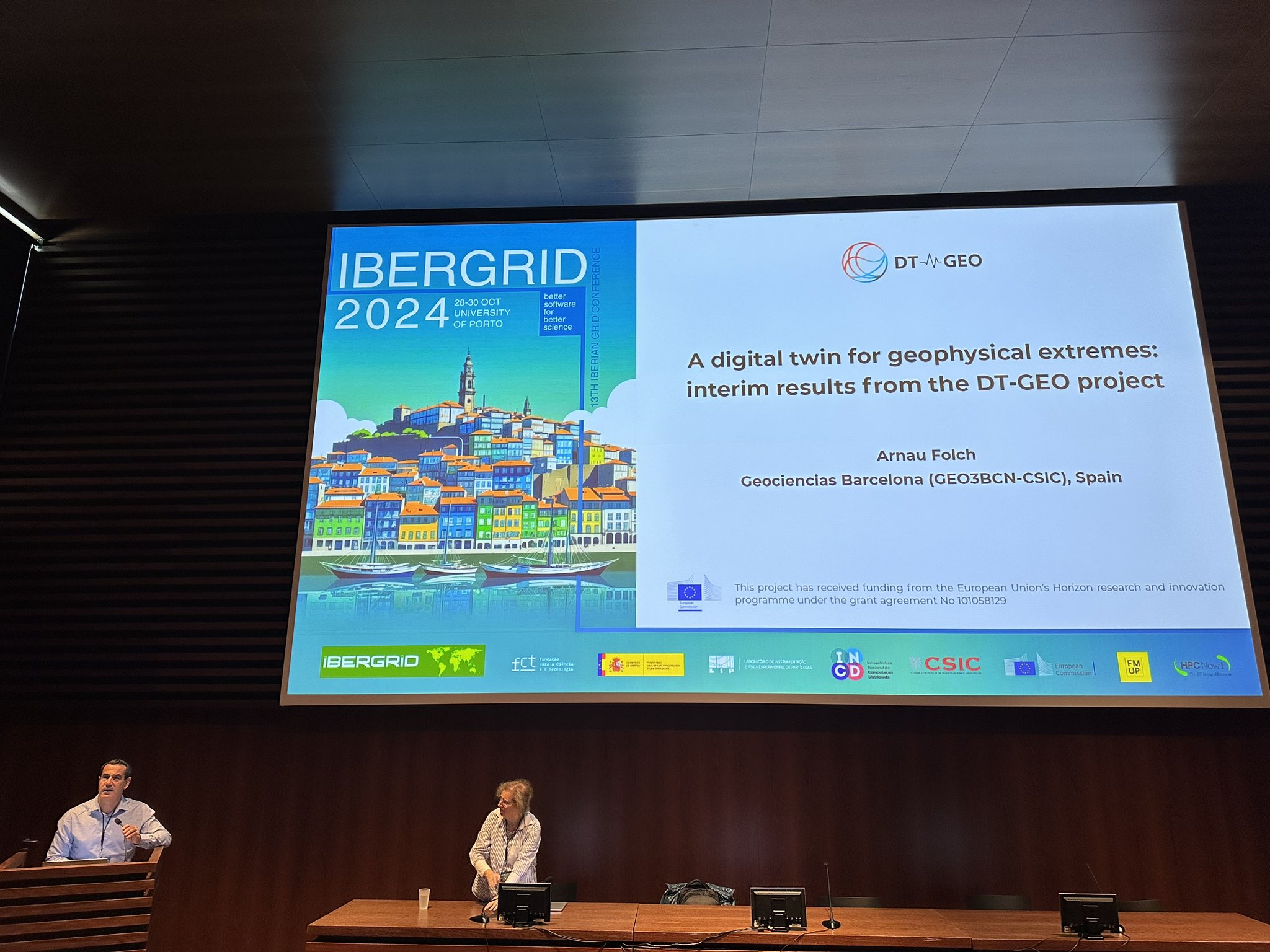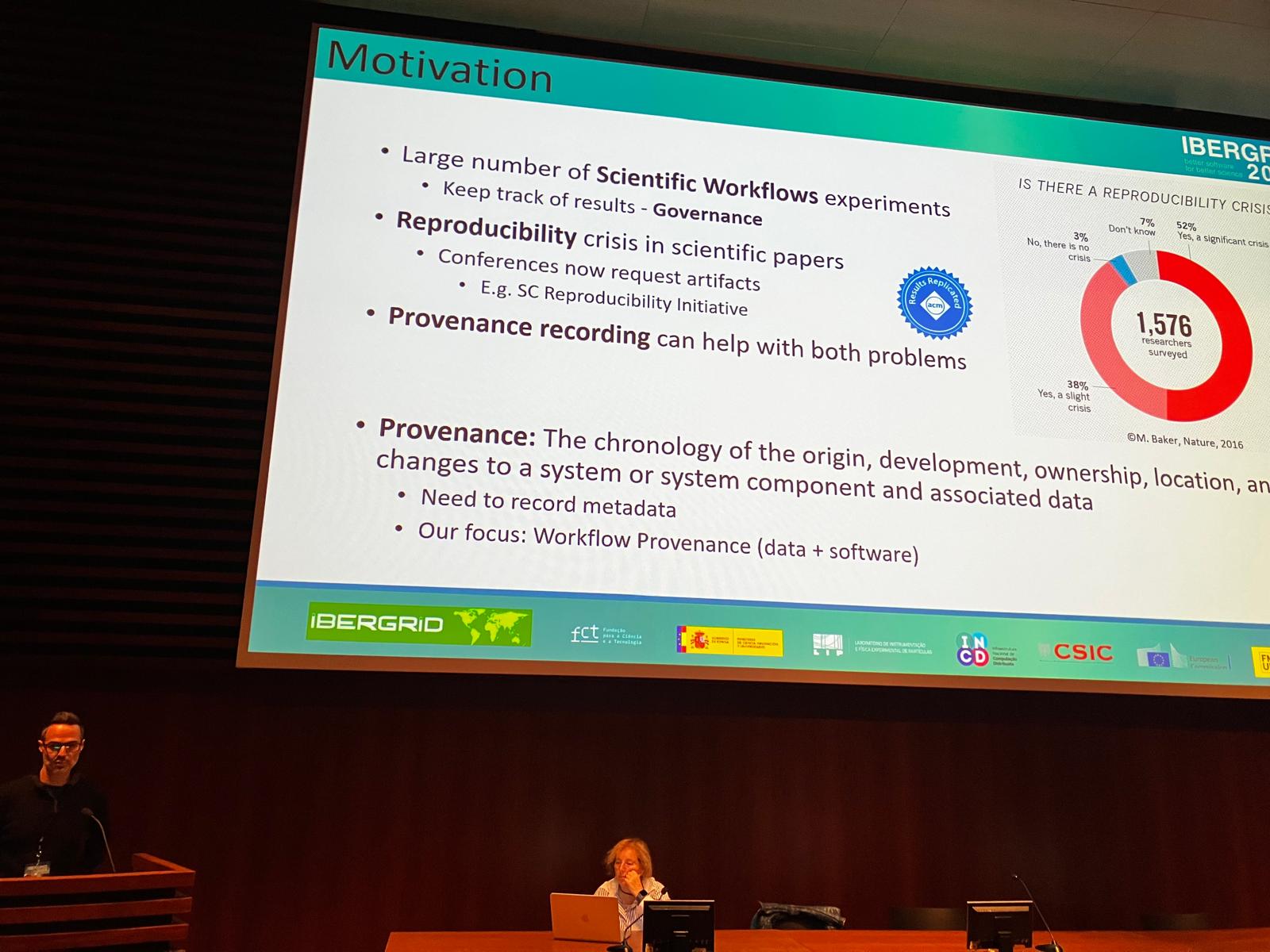Researchers from DT-GEO provided presentations on the latest advancements in Digital Twin technology, underscoring the project’s commitment to Open Science and data accessibility. Arnau Folch introduced the DT-GEO project to the IBERGRID community, setting the foundation for understanding DT-GEO’s mission and technological framework. His introduction opened the room for discussions on reproducibility, interoperability, and data quality—all core pillars of the project and of Digital Twin development.

Daniele Lezzi and Raül Sirvent from the Barcelona Supercomputing Center (BSC-CNS) presented “Reproducibility of parallel workflows for Digital Twin” and highlighted the importance of reproducibility in parallel workflows, a vital element in Digital Twin technology. By ensuring reproducible workflows, DT-GEO is setting a standard for consistency and reliability in complex simulations, enhancing the capacity for scaling solutions and sharing findings across the scientific community.


Ivan Palomo of the Instituto de Física de Cantabria (IFCA-CSIC-UC) emphasized the importance of FAIR data principles (Findable, Accessible, Interoperable, and Reusable) in “”FAIR-EVA: Fair data in the DT-GEO project”. Palomo explained how DT-GEO’s commitment to these principles promotes open data practices, fostering collaboration and accelerating innovation in the realm of Digital Twin technology. FAIR data not only bolsters DT-GEO’s accessibility but also ensures that data-driven science becomes a collaborative effort on a global scale.

Jorge Gomes and Mario David from the Laboratório de Instrumentação e Física Experimental de Partículas (LIP) shared insights into the containerization of applications and services within the DT-GEO framework in “Contaneirization of applications and services in DT-GEO”. By leveraging container technology, the team enables efficient deployment and management of complex tools, which is crucial for operating at scale. Their approach simplifies the execution and replication of simulations, making it easier to conduct research with high computational demands.

Pablo Orviz from IFCA-CSIC addressed the pivotal role of metadata in characterizing DT-GEO’s Digital Twins in “Metadata-powered characterization of DT-GEO Digital Twin”, underscoring the importance of effective metadata management for seamless interoperability. DT-GEO enhances its data exchange capabilities by standardising metadata practices, allowing various research groups to interconnect their datasets, enabling a comprehensive and cohesive digital ecosystem.

Alejandro González from the University of Malaga’s Edanya research group presented the latest advancements in tsunami modeling, an area where DT-GEO’s Tsunami Team is making notable strides, in “Tsunami modelling within the framework of DT-GEO”. Using flagship codes like Tsunami-HySEA and Landslide-HySEA, the team is working on integrating seismic model data with hydrodynamic simulations to improve real-time forecasting. This includes a new PTF (Probabilistic Tsunami Forecasting) workflow and a Site Demonstrator in the Mediterranean Sea, a valuable addition to Europe’s natural disaster preparedness tools.

Through these presentations, DT-GEO showcased its commitment to driving impactful research by leveraging Digital Twin technology and advanced data methodologies. The project’s presence at IBERGRID 2024 reflects its dedication to supporting Open Science and enhancing disaster resilience through collaborative, interoperable, and scalable solutions.



